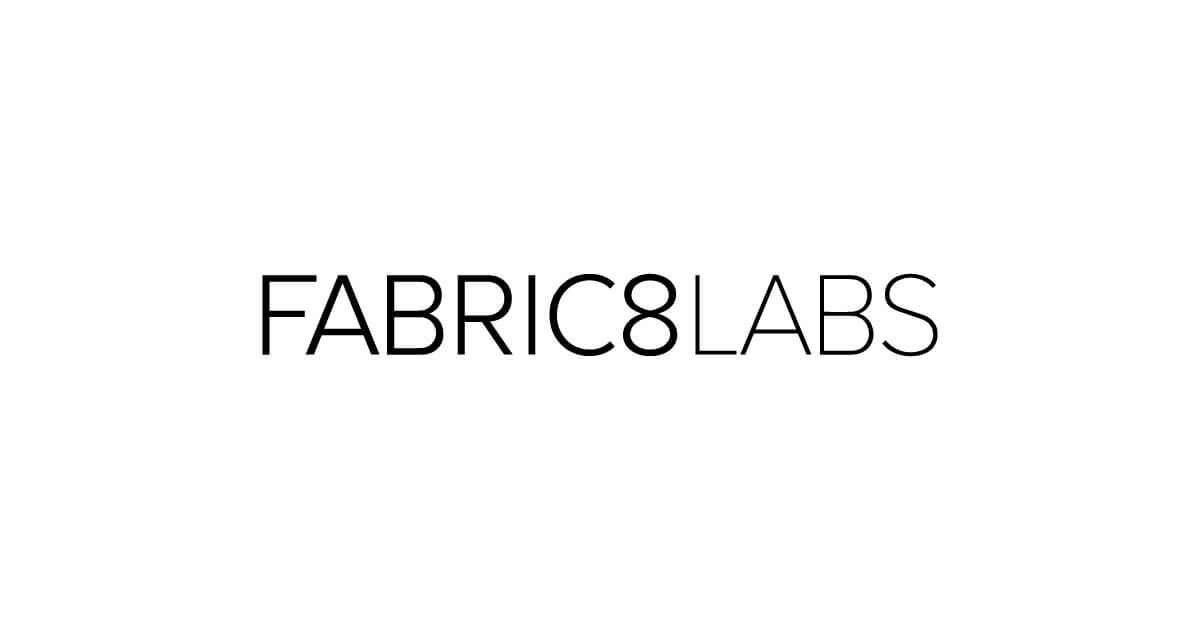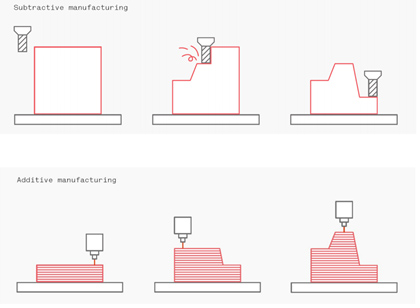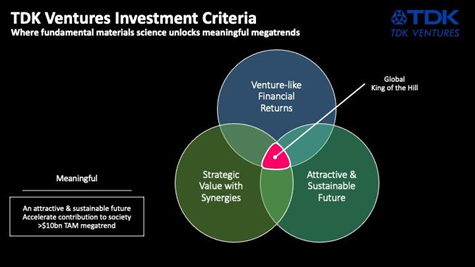Intoduction
Anil Achyuta, Investment Director, TDK Ventures
In a recent blog, Nicolas Sauvage, Managing Director of TDK Ventures, outlined our mission to invest in materials science startups as a means to unlocking a sustainable future and positive venture capital returns. We recently invested in Fabric8Labs, a materials science start-up focusing on metal 3D printing, so today I’ll discuss the why.
3D printing: a brief overview
Additive manufacturing, commonly known as 3D printing, is the process of making a solid object from a digital file. In this process, successive layers of material — plastic filaments, resin or metal powders — are joined to make an object from 3D model data. Each successive layer bonds to the preceding layer of melted or partially melted material.
By contrast, when you create an object by traditional means (subtractive manufacturing), it is often necessary to remove material through milling, machining, carving, shaping or other means. In subtractive manufacturing, sharp rotator tools or cutters remove material on a solid block of material to create the final shape. Figure 1 below compares the two methods.
Figure 1. Object design using subtractive and additive manufacturing methods. Source: 3D Hubs
Additive manufacturing lets you print an assembly as a single piece, reducing design, prototyping, and manufacturing time while avoiding costly errors and enhancing product quality. Customers worldwide use 3D printing for prototyping because of its digital flexibility and manufacturing operations efficiency. But lately, an increasing number of customers are concerned about waste created by subtractive methods, and environmental footprint of such downstream processing steps, making 3D printing an attractive, sustainable paradigm.
TDK’s CEO Mr. Ishiguro-san recently shared with us that there are many ways to reduce our CO2 footprint. One of them is to consume less. I thanked Ishiguro-san for delivering this astonishingly simple goal with colossal implications and guiding me to look at technologies and projects that would help consume less.
Technology advances expand market potential for additive manufacturing
It’s increasingly clear: The way we make things is changing.
As more companies realize the advantages that come with additive manufacturing — like tooling-free manufacturing, ability to create highly complex parts, assembly consolidation and more — the technology has grown dramatically in recent years.
And today, with the emergence of high-speed, high-capacity binder jetting systems, the industry stands on the precipice of a revolution — Additive Manufacturing 2.0 — that won’t just change how products and parts are made but could fundamentally alter the manufacturing landscape.
Additive Manufacturing 2.0 focuses on mass production with end-use parts driving market growth. The Wohlers Report 2020 predicts company adoption of additive manufacturing for end-use parts increasing from 5% in 2016 to 46% by 2022, with an increase in compound annual growth rate (CAGR) from $12 billion to $146 billion from 2019 to 2030.
And customers are eager for metal 3D solutions. A 2019 Ernst and Young study of 582 companies, found that about 49% use metal 3D printing. While 72% are also using polymer, the attractiveness of both materials is increasing. 65% of companies in the survey aspire to apply a metal printer — either their own or through a service provider. Parts made with 3D metal printing include:
- Auto applications such as a shift paddle and center marketing
- Circuit boards
- Spinal implants
- Rocket engines
- Tools: Injection modeling tools and milling cutters
The impact of Additive Manufacturing 2.0, however, reaches far beyond the factory floor.
In addition to changing the way millions of metal parts are made each year, additive manufacturing has the potential to help industry usher in a cleaner, more sustainable world.
TDK Ventures’ investment strategy for the metal 3D printing market
At TDK Ventures, we employ simplicity as the cornerstone of our investment criteria that has 3 simple steps:
- First, we focus on best-in-class start-ups that are operating in explosive markets for venture-style financial returns. Usually, best-in-class startups will often have a small set of early adopters that grow at lightning pace and due to the competitiveness of the technology, team, and explosive market, have the highest likelihood to win big, in venture-style — we call this “King of the Hill” internally.
- Second, we look for the right fit into TDK’s long-term strategic plan to ensure we can bring tangible value to the startup beyond the capital we invest — we call this TDK Goodness.
- Third, we establish that such a start-up brings positive impact to the world using the United Nations’ sustainable development goals. If the start-up satisfies all three criteria we invest, otherwise we don’t.
Figure 2. TDK Ventures’ triple bottom line philosophy in a nutshell
We were attracted by the new technologies and market opportunity in the metal 3D printing industry because this industry is growing rapidly. Understanding the true costs in metal 3D printing was a fundamental factor in determining which startups are candidates for best in class and our investment criteria, in the explosive markets of our interest.
Metal 3D printing isn’t a simple technique. For starters, the metal powders are extremely expensive due to the manufacturing methods used to get them into the “3D printing ready” format. Once the metal powder is in the right format, it must be mixed into a formulation frequently, leading to additional capital expenditure (capex) costs. Often, many processes need removal of support materials once printing is complete. The surface finish on an end-part might require significant post-processing.
Sometimes, sintering — the process of compacting and forming a solid mass of material by heat or pressure — is needed to induce the right mechanical properties, and the capex for sintering is very high. Investing in this space required careful consideration of full cost of ownership and unit economics analysis, while also considering the performance of the end parts, which often, is different than traditionally manufactured parts.
Figure 3. Fabric8Labs’ recent prints demonstrating versatility of their technique to print diverse geometries with high-aspect ratio products from copper and other metal alloys
After deep research and analysis, we started to apply our 3-step method. First, we targeted opportunities with new use cases driven by thermal management, particularly for electrification and advanced computation due to the explosiveness of both these markets. Second, we came to an understanding of how strategically relevant these use cases were to TDK and how we could be adding value to such a startup. After many discussions with TDK experts, we realized that 3D printed metal parts could be vital to our electronic component business, specifically the ones with optimal cost of ownership without trading off on performance and throughput compared to existing manufacturing methods. Our third step was to focus our research on positive environmental footprint where we favored room temperature techniques, recyclable feedstocks, careful consumption as reference.
After a rigorous review process of applying our 3-step method, Fabric8Labs emerged as the team that squarely fit our investment thesis. They are the start-up in an explosive market with high strategic value, and shares an aligned mission and values focused on sustainability and how we can collectively decrease our environmental footprint.
Founded in 2015, Fabric8Labs developed a non-thermal metal 3D printing process as an alternative to current powder bed fusion technologies. Its patented process eliminates the need for metal powders, vacuum chambers, and lasers, hence no mixing cost, no sintering equipment needed, which reduces the capex. In addition, Fabric8Labs uses commodity metal salts for their deposition process, which is more economical than metal powders, thereby significantly reducing the total cost of ownership.
Fabric8Labs is initially targeting the rapidly growing copper market by developing copper 3D printing in cooling applications for semiconductors, chip-scale fabrication and radio frequency 5G components. The company is also sampling other metals, including nickel, aluminum, and other alloys, which creates opportunities across multiple industries, from automotive to medical industries.
As stated, our mission is to deliver meaningful financial results while exploring strategically relevant technologies to bring positive change to society and the environment. We plan to collaborate with Fabric8Labs to help accelerate their vision in metal 3D printing and believe their technology will be a game changer in the additive manufacturing market.
To learn more, see the full press releases here or visit www.tdk-ventures.com or www.fabric8labs.com.





